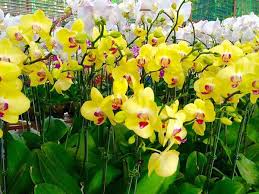Money Cat and Contemporary Southeast Asian Art: A Fusion of Tradition and Modern Expression
Exploring the Intersection of Money Cat and Contemporary Art in Southeast Asia:

In the vibrant tapestry of contemporary art in Southeast Asia, Money Cat emerges as a cultural catalyst, seamlessly blending traditional symbolism with the dynamic expressions of modern artistic endeavors. This article embarks on a journey through the realms of contemporary Southeast Asian art, where the iconic feline figure becomes a muse for artists navigating the crossroads of tradition and innovation.
1. Symbolism in Contemporary Southeast Asian Paintings:
Money Cat takes center stage in contemporary Southeast Asian paintings. Artists employ diverse styles and mediums to depict the feline figure, infusing their works with cultural richness and symbolism. From canvas to digital art, Money Cat becomes a prominent motif, capturing the essence of prosperity and tradition.
2. Sculptural Expressions of Money Cat in Southeast Asian Art:
Sculptors in Southeast Asia explore Money Cat as a subject for contemporary sculptures. The feline figure’s symbolic charm is captured in three-dimensional forms, providing viewers with tangible and immersive encounters that bridge traditional sculptural techniques with modern artistic expression.
3. Digital Art and Money Cat Symbolism:
Contemporary Southeast Asian artists leverage digital platforms to explore Money Cat symbolism in digital art. From interactive installations to virtual experiences, artists create dynamic digital landscapes that celebrate the feline figure, offering audiences new perspectives on cultural narratives through cutting-edge technology.
4. Money Cat in Southeast Asian Performance Art:
Performance artists in Southeast Asia incorporate Money Cat symbolism into their works. Whether through symbolic movements, costumes, or interactive performances, the feline figure becomes a dynamic element that engages audiences in a dialogue about prosperity, culture, and the evolving nature of contemporary Southeast Asian art.
5. Money Cat as a Subject in Southeast Asian Photography:
Photographers capture the charm of Money Cat in contemporary Southeast Asian photography. The feline figure becomes a lens through which artists explore cultural narratives, creating captivating visual stories that reflect both tradition and the ever-changing landscapes of Southeast Asian societies.
6. Money Cat in Southeast Asian Street Art:
Street artists across Southeast Asia incorporate Money Cat into their vibrant murals and street art compositions. Walls become canvases where the feline figure is reimagined in bold and expressive ways, contributing to the urban dialogue on culture, prosperity, and the fusion of traditional symbols with contemporary aesthetics.
7. Money Cat-Inspired Installations at Southeast Asian Art Festivals:
Art festivals in Southeast Asia feature installations inspired by Money Cat. These immersive experiences invite festival-goers to engage with the feline figure in dynamic ways, fostering a sense of cultural celebration and connecting attendees with the rich symbolism embedded in the Southeast Asian artistic landscape.
8. Money Cat Collaborations Across Art Disciplines:
Contemporary Southeast Asian artists engage in interdisciplinary collaborations inspired by Money Cat. These projects involve the fusion of visual arts, music, dance, and digital technology, creating holistic experiences that celebrate the feline figure as a symbol of prosperity and cultural identity.
Conclusion:
Money Cat’s influence on contemporary Southeast Asian art reflects its adaptability as a cultural symbol in the dynamic and ever-evolving artistic landscape of the region. As artists continue to explore the intersections of tradition and modernity, the feline figure becomes a timeless muse, contributing to a narrative that celebrates both the enduring charm of cultural symbolism and the innovative spirit of contemporary artistic expression in Southeast Asia. In this fusion of tradition and modernity, Money Cat stands as a testament to the rich tapestry of Southeast Asian art, inviting audiences to engage with its symbolic significance in a context that is both rooted in history and open to the boundless possibilities of the future.

